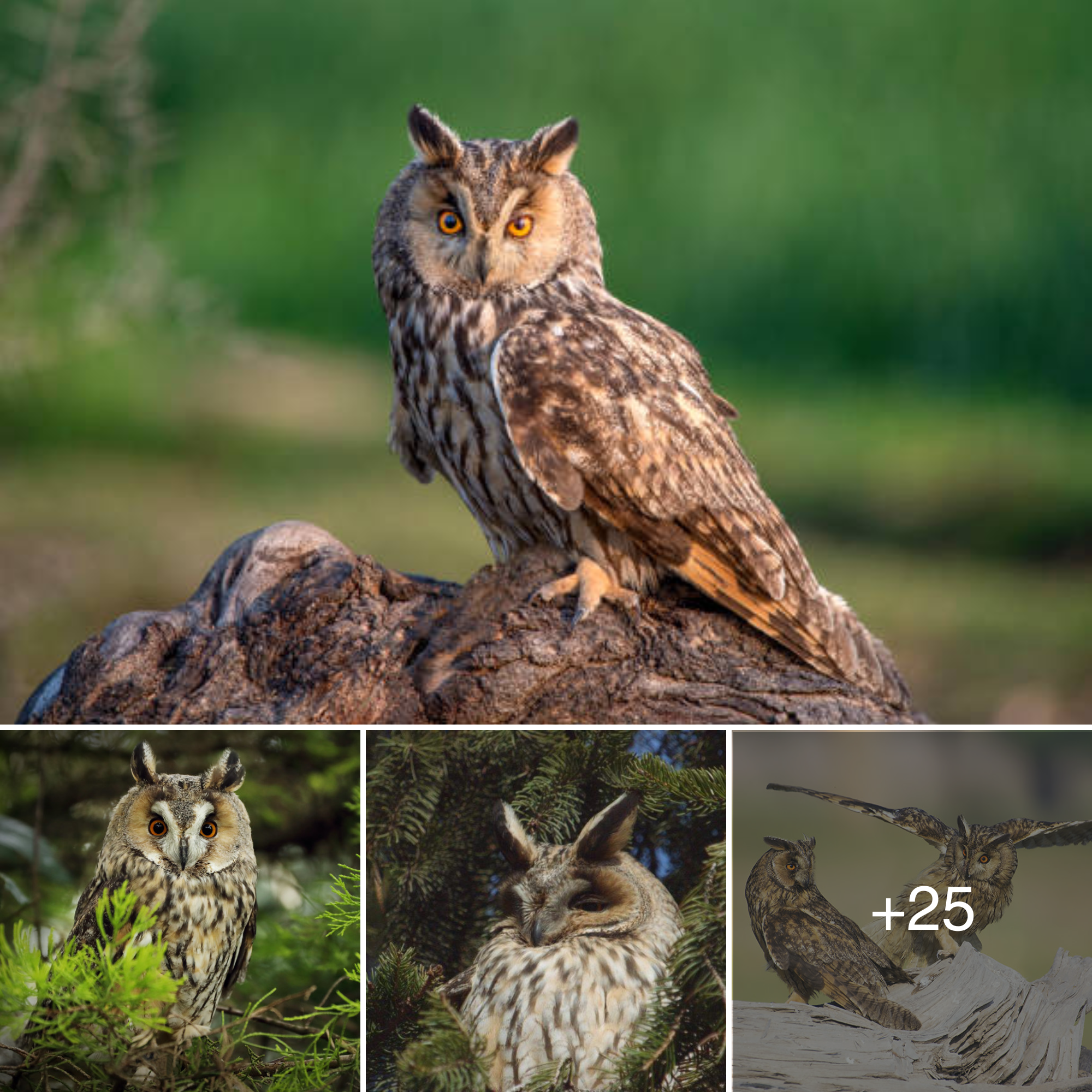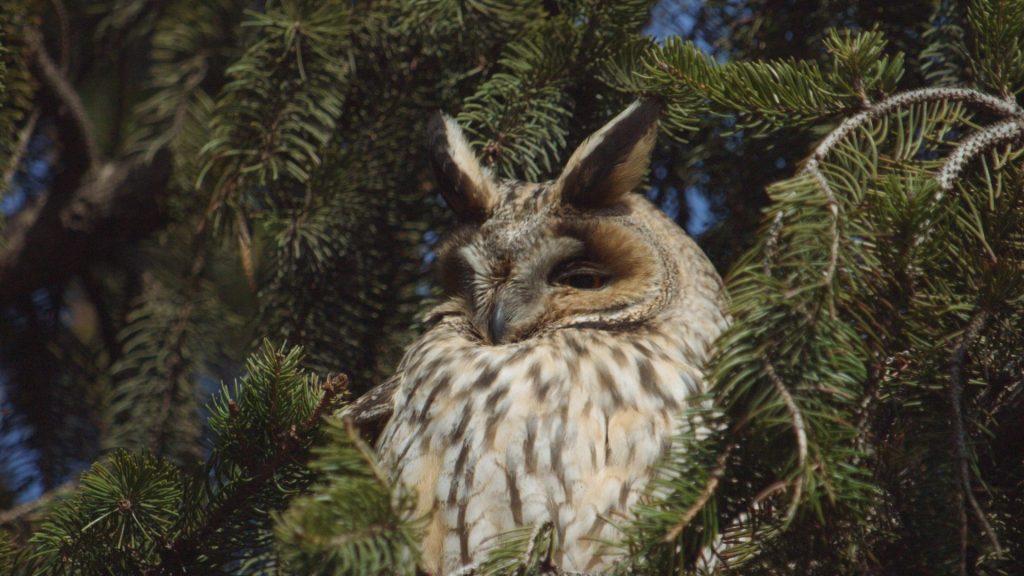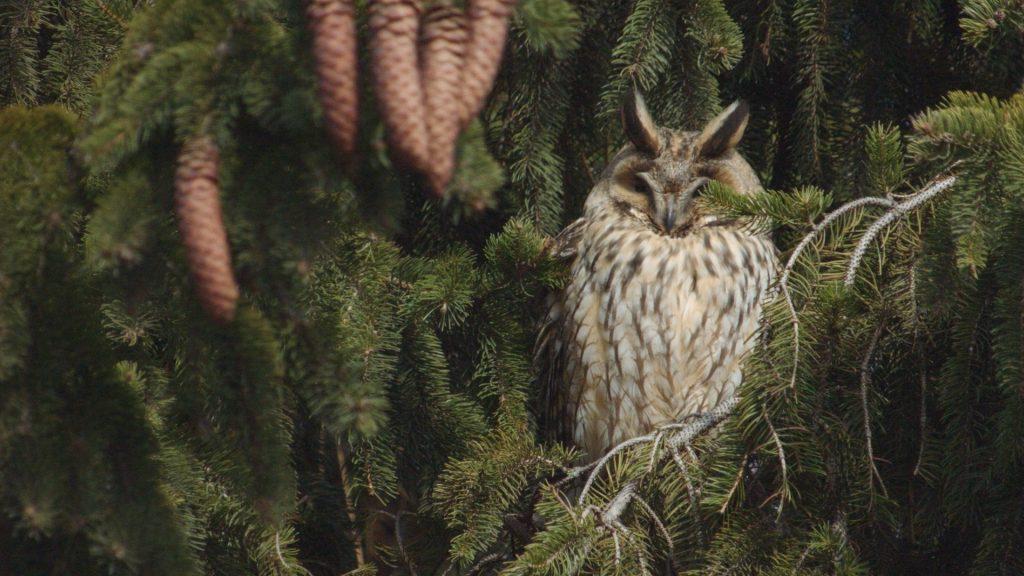The medium-sized, slender Strigidae long-eared owl (Asio otus) is sometimes known as the northern short-eared owl. This species is found throughout Europe, Asia, the Middle East, North America, and even northern Africa, the Canary Islands, and the Azores.




An adult long-eared owl has brownish-gray plumage, an orange facial disc, whitish underparts with dark stripes, and a brown back. When perched, its large ear tufts separate it from other owls. Sexual dimorphism occurs, with females larger and more colorful than males. This owl weighs 220–435 grams and is 35–40 centimeters tall. Flight reveals its enormous, rounded wingspan of 90–100 cm. Juvenile birds have fluffy feathers and a “V”-shaped facial marking.



Long-eared owls mostly live in their breeding territory, but those in the north migrate south in the fall. These owls may also move to food-rich places when food is scarce. They enjoy woods with plants or grassland. Coniferous and deciduous forests with watercourses and windbreaks are typical. The species lives from sea level to about 2000 meters above sea level. Long-eared owls forage at night in open bushes and grasslands and roost in deep forest cover during the day.